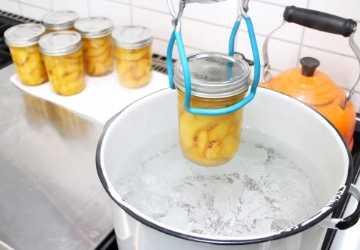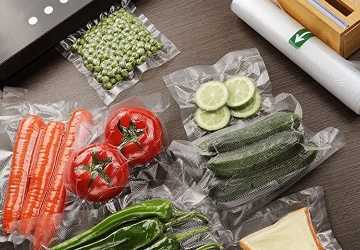Summer burgeons with an abundance of fresh produce from gardens and markets. Preserving summer produce is paramount to enjoying these flavors year-round. Here, we will delve into various food preservation techniques to help you maximize your seasonal bounty. These methods will ensure that you can savor the essence of summer, even in the colder months.
The Imperative of Preserving Summer Produce
Preserving fruits and vegetables enables you to:
- Mitigate alimentary waste
- Economize by procuring in bulk during peak season
- Savor seasonal flavors throughout the annum
- Maintain a salubrious diet with home-preserved foods
Canning: A Traditional Approach
Water Bath Canning
Water bath canning is ideal for high-acid foods like fruits, tomatoes, and pickles. Here's the process:
1. Sterilize jars and lids.
2. Fill jars with prepared produce and liquid (syrup, water, or juice).
3. Place jars in a water bath canner, ensuring they are submerged by at least an inch of water.
4. Bring to a boil and process for the duration specified in your recipe.
5. Extract jars and let them cool.

Pressure Canning
Pressure canning is indispensable for low-acid foods such as vegetables, meats, and legumes. Follow these steps:
1. Sterilize jars and lids.
2. Fill jars with prepared produce and liquid.
3. Place jars in a pressure canner and secure the lid.
4. Heat to augment pressure and process for the time specified in your recipe.
5. Allow the canner to cool and release pressure before extracting jars.
Freezing: Efficient and Convenient
Freezing is one of the most facile food preservation techniques. It maintains the nutritional value and flavor of produce. Here’s how to do it:
1. Blanch vegetables (boil briefly, then cool in ice water) to arrest enzymatic activity.
2. Desiccate produce thoroughly.
3. Pack into freezer bags or containers, expelling as much air as possible.
4. Annotate with the date and contents.
Desiccation: Extracting Moisture for Longevity
Desiccation is an effective food preservation technique that removes moisture from produce and inhibits the proliferation of bacteria, yeast, and mold. There are several methods for desiccation:
Air Desiccation
Ideal for herbs and some fruits, air desiccation is a rudimentary method:
1. Tie herbs into small bundles and suspend them upside down in a dry, well-ventilated area.
2. For fruits, slice thinly and place on racks in a desiccated, warm area.
Oven Desiccation
This method works well for most fruits and vegetables:
1. Slice produce thinly.
2. Place on baking sheets and set the oven to a low temperature (140°F or 60°C).
3. Leave the oven door slightly ajar to allow moisture to dissipate.
4. Desiccate until leathery or brittle.
Dehydrator
A food dehydrator offers a regulated environment for desiccation:
1. Arrange sliced produce on dehydrator trays.
2. Set the dehydrator to the recommended temperature for your produce.
3. Desiccate until the desired texture is achieved.
Fermenting: An Antiquated Method
Fermentation is a venerable food preservation technique that amplifies flavors and incorporates beneficial probiotics. Commonly fermented foods include sauerkraut, kimchi, and pickles. Here’s a rudimentary process:
1. Clean and chop produce.
2. Add salt (and occasionally water) to create a brine.
3. Pack produce tightly into a fermentation vessel.
4. Weigh down the produce to keep it submerged in the brine.
5. Cover and let ferment at room temperature for several days to weeks, contingent on the recipe.
Pickling: Flavorful and Tangy
Pickling employs vinegar or brine to preserve produce. Here’s a rudimentary pickling method:
1. Prepare produce by washing and cutting.
2. Concoct a pickling solution with vinegar, water, salt, and spices.
3. Pack produce into sterilized jars and pour the scalding pickling solution over them.
4. Seal jars and let them cool before storing them in the refrigerator or processing them in a water bath canner for shelf stability.
Storing Seasonal Fruits and Veggies: Optimal Practices
Proper storage is quintessential to extending the longevity of fresh produce. Here are some tips for storing seasonal fruits and veggies:
Cool, Dark, and Arid
Many fruits and vegetables endure longer when stored in a cool, dark, and arid environment. Examples include:
- Tubers
- Alliums
- Bulbous plants
- Winter squash
Refrigeration
Some produce necessitates refrigeration to retain freshness:
- Berries
- Leafy greens
- Cruciferous vegetables
- Carrots
Root Cellar
A root cellar is a venerable method for storing seasonal fruits and veggies:
- Pomes
- Brassicas
- Beetroots
- Turnips
Vacuum Sealing: Extending Freshness
Vacuum sealing extricates air from packaging, mitigating oxidation and prolonging shelf life. Here's how to do it:
1. Place produce in a vacuum-seal bag.
2. Utilize a vacuum sealer to extricate air and seal the bag.
3. Store in the refrigerator, freezer, or pantry, contingent on the produce.

Charcuterie and Curing: Preserving Meats
Charcuterie, an innovative food preservation technique, is the meticulous art of curing and aging meats, and can be adapted to summer produce like tomatoes and fruits to concoct unique, shelf-stable items.
Charcuterie Techniques for Preserving Summer Produce
1. Dry Curing: Embellish produce with salt and spices, then air dry.
2. Wet Curing: Submerge produce in a brine solution before desiccation.
Exemplars
- Salt-cured tomatoes: Intensifies umami, excellent for sauces and salads.
- Fruit leathers: Puree fruits and dehydrate in a dehydrator or oven, engendering a chewy, nutritious confection.
Saccharine Preservation: Confections and Syrups
Preservation through saccharine means, such as crafting candies and syrups, can metamorphose surplus fruits into delectable, durable treats.
Crafting Fruit Confections
1. Prepare a dense syrup (2:1 ratio of saccharose to water).
2. Simmer fruit slices in syrup until translucent.
3. Desiccate the fruit slices and coat with additional sugar.
Producing Fruit Syrups
1. Simmer fruit with equal parts sugar and water.
2. Strain and bottle the syrup, sterilizing it for long-term storage.
Applications
- Fruit confections as snacks or dessert embellishments
- Syrups for libations, desserts, and baking
Alcoholic Preservation: Infusions and Extracts
Storing seasonal fruits and veggies in alcohol not only extends their shelf life but also engenders flavorful infusions and extracts for culinary and medicinal purposes.
Procedure for Alcoholic Preservation
1. Select a high-proof alcohol (vodka, brandy, or rum).
2. Immerse clean, desiccated produce in the alcohol.
3. Sequester in a glass jar and store in a cool, dark locale for several weeks.
4. Strain and bottle the infused alcohol.
Utilizations
- Homemade extracts (e.g., vanilla, citrus)
- Infused spirits for cocktails and culinary recipes
Conclusion
By mastering these food preservation techniques, you can savor the essence of summer all year long. Whether you opt for canning, freezing, desiccating, fermenting, pickling, or vacuum sealing, each method proffers unique benefits for preserving summer produce. With proper storage, you can ensure that your seasonal fruits and veggies remain fresh and delectable. Commence preserving today and relish the flavors of summer whenever you desire!
